|
CHENGDU (Day 10 - part 2)
Located at the foot of Mt. Futou, the Chengdu Research Base of Giant Panda Breeding is a non-profit organization engaged in wildlife research, captive breeding, conservation education, and educational tourism. The base was founded in 1987, with six Giant Pandas rescued from the wild. In 2008, the captive population has increased to 83 individuals. No Giant Pandas have been taken from the wild for 20 years.
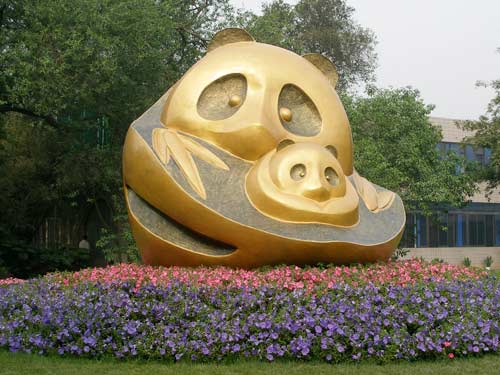
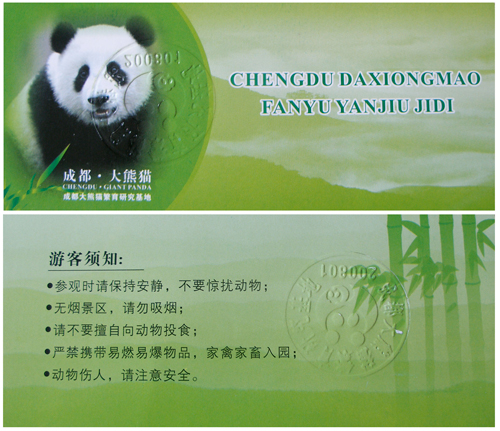
The entry ticket
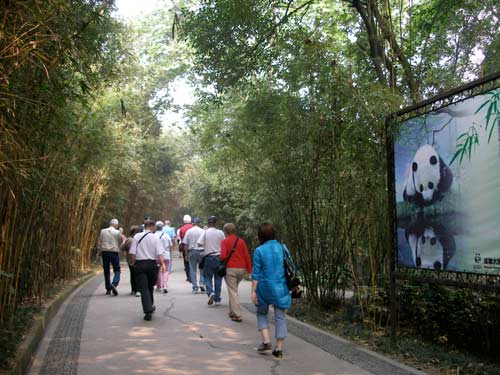
Walking down bamboo-lined lanes
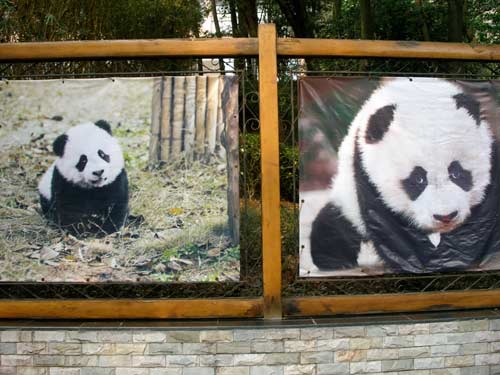
The Giant Panda (literally meaning "cat-foot black-and-white") is a bear native to central-western and southwestern China. Despite its taxonomic classification as a carnivore, the Giant Panda has a diet which is 99% bamboo. It eats other foods such as honey, eggs, fish, yams, shrub leaves, oranges, and bananas when available.
The Giant Panda lives in a few mountain ranges in central China. It once lived in lowland areas, but farming, forest clearing, and other development now restrict it to the mountains. It is estimated that around 1,600 pandas are currently living in the wild. Though reports show that the number of wild pandas is on the rise, it still remains on the endangered animal list.
Giant Pandas have been on the planet for 8 million years. The earliest written record of their existence is 3,000 years old.
adult male:
A Giant Panda can live to be 25 - 30 years old in captivity (18 years in the wild).
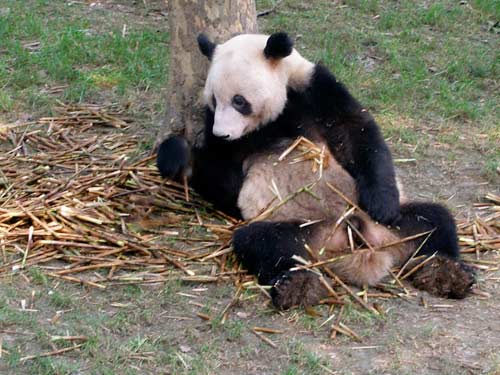
Hmmm, which piece looks good?
Since the Giant Panda still has the digestive system of a carnivore and does not have the ability to digest cellulose efficiently, it actually derives very little energy and protein from the consumption of bamboo. Therefore it must eat as much as 20 to 30 pounds of bamboo shoots a day. As a result of the limited energy input from its diet, the Giant Panda tends to limit its social interactions and energy expenditures.
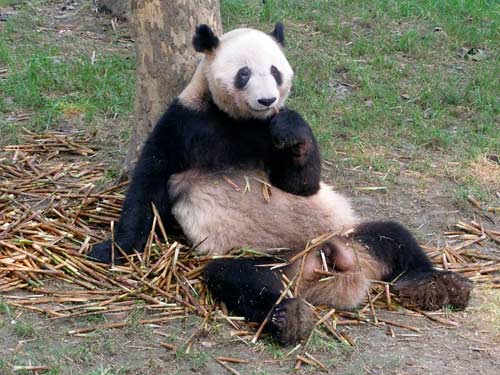
Eating with the left...

... and then the right paw
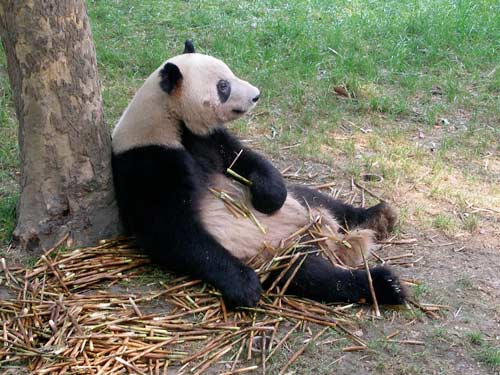
Taking a short break after a good meal
Enclosre of several 18-month olds:
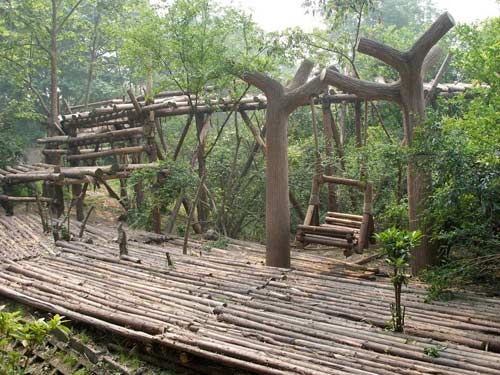
The young animals have plenty of place to climb and explore...
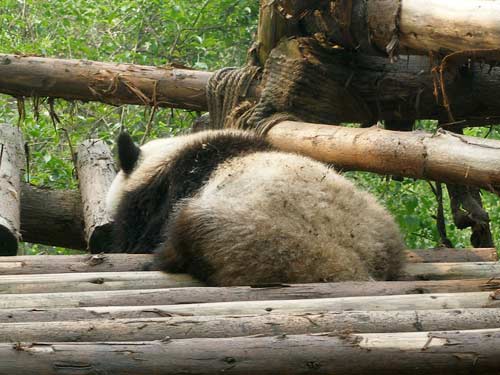
... although it seems to be nap time for most of them.
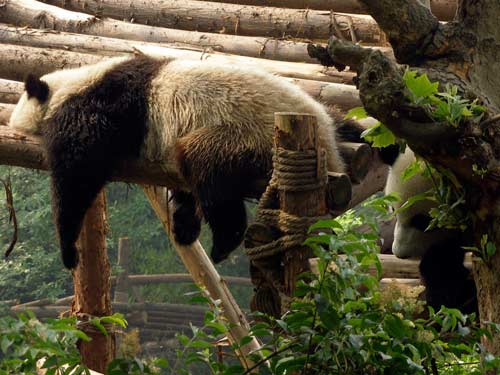
Mother with two 8-month old babies:
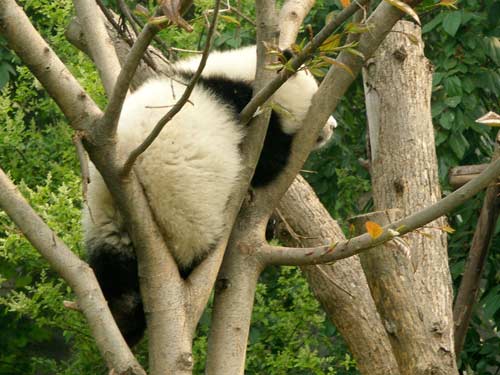
The little girl takes a nap in the tree.
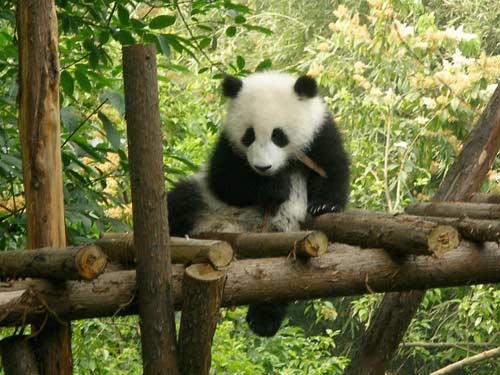
The little boy explores his environment a bit...
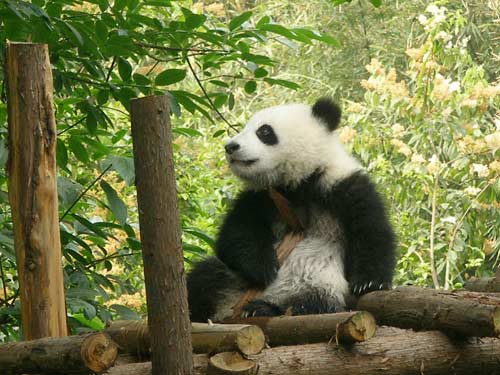

... until he too gets tired.
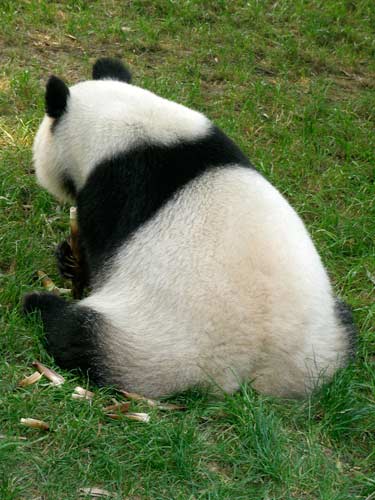
Mom has no interest in anybody at the moment. She's eating.
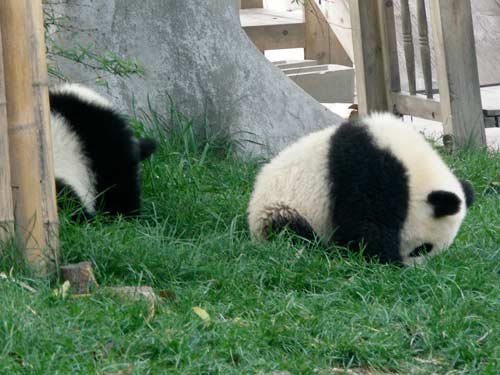
These youngsters were having fun browsing through the grass.
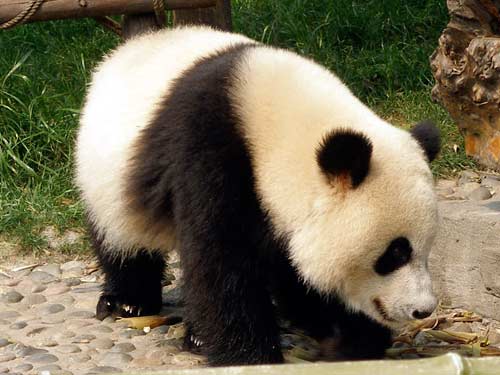
This older panda came out looking for some food...
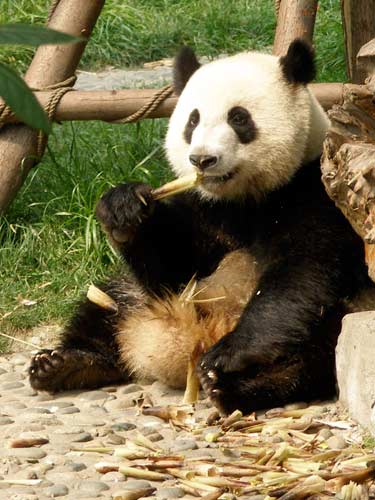
... and found it.

The "look"
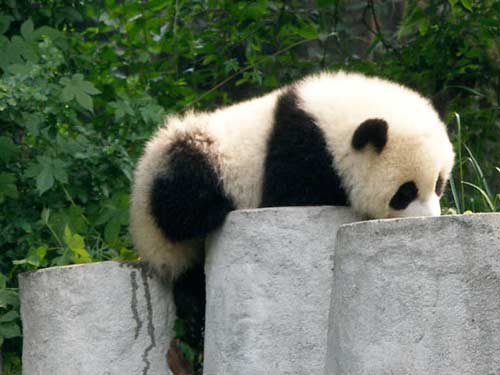
A baby spends a lot of energy climbing to the top of these blocks...
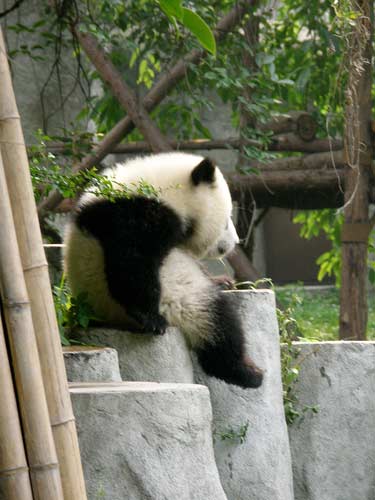
... and now needs a bit of a rest.
25 species of bamboo are eaten by pandas in the wild. Only a few bamboo species are widespread at the high altitudes pandas now inhabit. Because of the synchronous flowering, death, and regeneration of all bamboo within a species (about every 60 years), the Giant Panda must have at least two different species available in its range to avoid starvation.
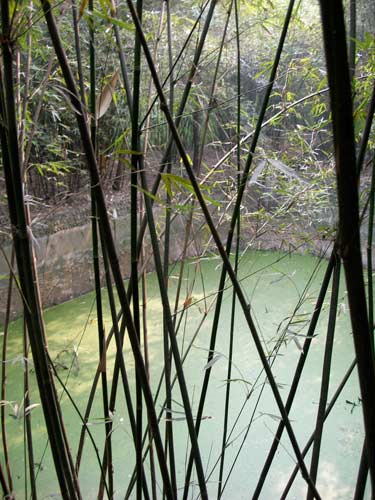
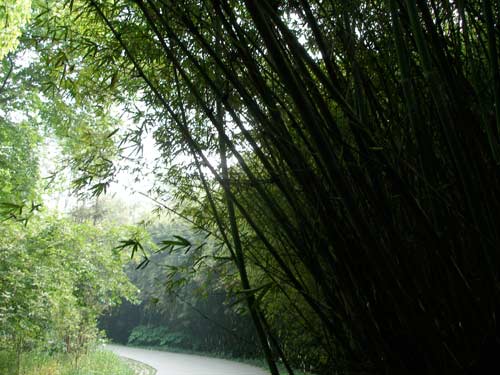
Bamboo leaves contain the highest protein levels; stems have less.
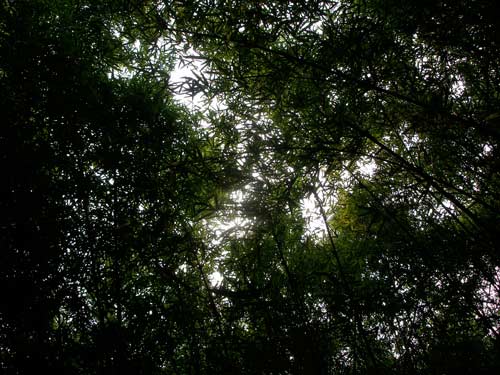
The grounds were picturesquely laid out.
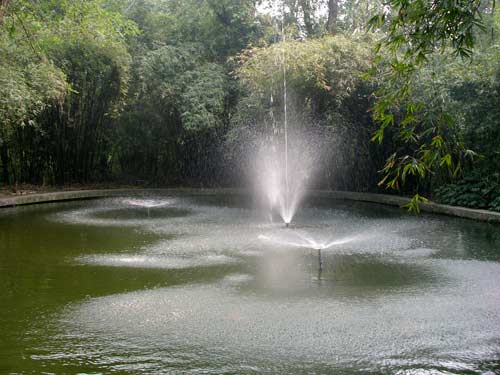
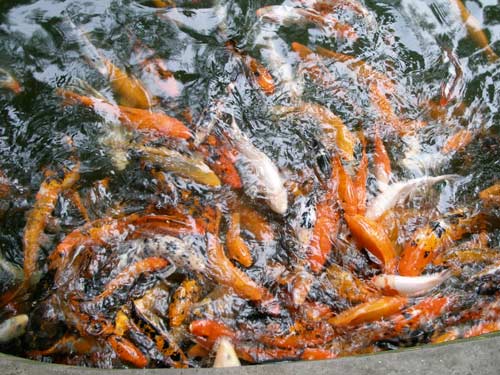
Koi thrash about with the hopes of food.
The taxonomic classification of both the Red Panda (or Lesser Panda) and Giant Panda has been under debate for many decades, as both species share characteristics of both bears and raccoons. However, molecular studies suggest that the Giant Panda is a true bear, though it differentiated early in history, while the Red Panda tends to be placed into its own independent family within the broad group that includes skunks, raccoons and weasels. Both pandas are distantly related by remote common ancestry from the Early Tertiary Period, tens of millions of years ago.
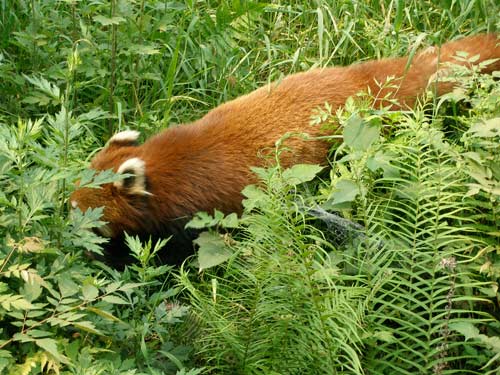
The Red Panda is slightly larger than a domestic cat, and lives 10 - 12 years in captivity.
Like the Giant Panda, the Red Panda eats mostly bamboo. Since it too cannot digest cellulose, it must consume a large volume of bamboo to survive, but it also eats berries, fruit, mushrooms, roots, acorns, lichen, grasses, and ocassionally young birds, fish, eggs, small rodents, and insects.
The Red Panda is endemic to the Himalayas, ranging from Nepal to China. There is an estimated population of fewer than 2,500 mature individuals. Their population continues to decline due to habitat fragmentation.

Red Pandas are crepuscular (most active at dawn and dusk). They are sedentary during the day, resting in the branches of trees.
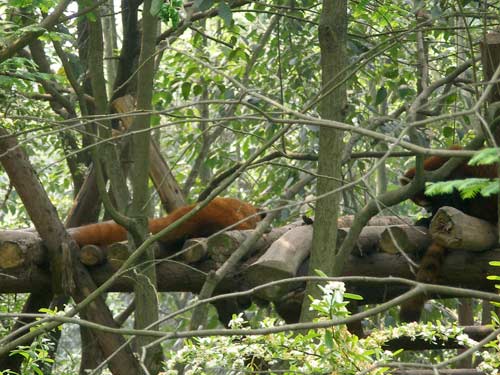
Due to its low-calorie diet, the Red Panda does little more than eat and sleep.
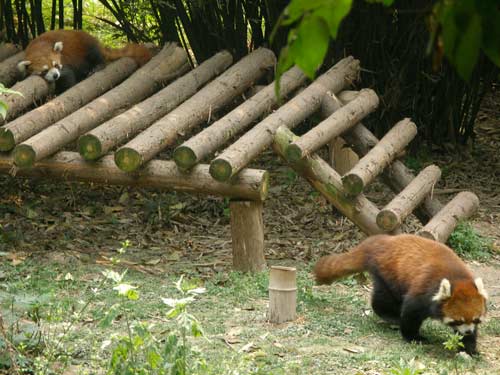
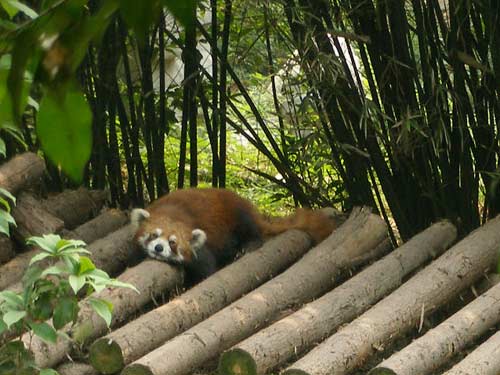
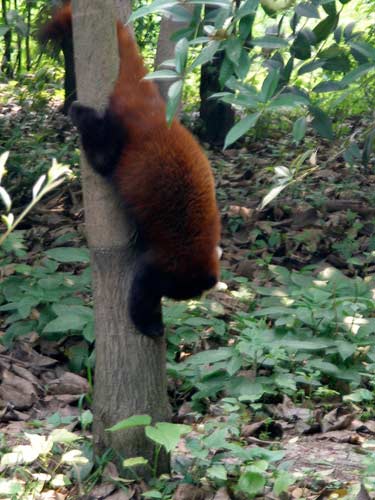
Red Pandas are excellent climbers and forage largely in trees.

In the afternoon, we were driven to the airport and took a 1 hour 15 minute plane flight to Xi'an. We were picked up by Jessie and Mr. Li (our driver) and were brought to the Wan Nian Grand Hotel.

These large freeway interchanges are appropriately called 'flyovers'.

Thinking of you still makes my heart... what??

Here, at Shuang Liu Airport, the baggage handlers ride bikes as well.

View from the plane of the Qinling Mountain range

These mountains provide a natural boundary between the north and south of the country and are also home to pandas. The highest peak is 12,000 feet and has snow year-round.
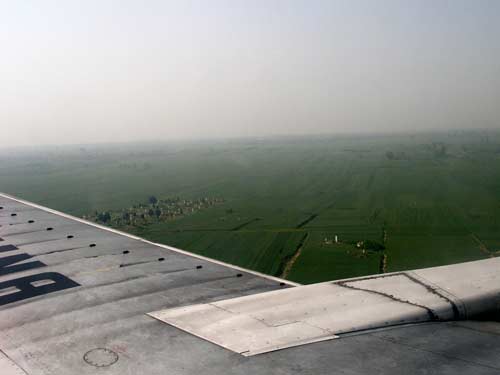
Landing near a small cemetery

On the drive to the hotel, we passed this artificial hill with the flat top, which is actually a 2,000 year old emperor's tomb. A palace used to surround it. Now all that remains is what is buried beneath it.
The 4-star Wan Nian Grant Hotel opened in 1988. It is 26 stories high with 333 guest rooms.


The sunset view. Xi'an tends to get lots of sandstorms from Inner Mongolia.
|

